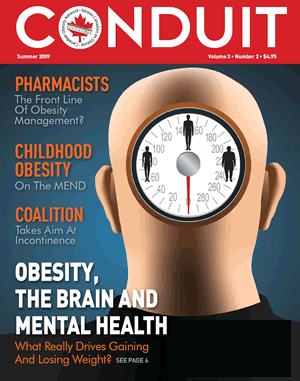Antipsychotic Prescriptions to Children – Too Much Too Soon?
 Following yesterday’s post on the issue of weight gain and metabolic syndrome seen in kids treated with second-generation antipsychotics (SGAs), today, I look at another paper by Silvia Alessi-Severini and colleagues from the University of Manitoba published in the same issue of the Canadian Journal of Psychiatry.
Following yesterday’s post on the issue of weight gain and metabolic syndrome seen in kids treated with second-generation antipsychotics (SGAs), today, I look at another paper by Silvia Alessi-Severini and colleagues from the University of Manitoba published in the same issue of the Canadian Journal of Psychiatry.
This paper examines the use of antipsychotics in children and adolescents (aged 18 years or younger) based on data collected from the administrative health databases of Manitoba Health and the Statistics Canada census between the fiscal years of 1999 and 2008.
Over these 10 years, prevalence of antipsychotic use increased with the introduction of the SGAs from 1.9 per 1000 in 1999 to 7.4 per 1000 in 2008.
The male-to-female antipsychotic usage ratio increased from 1.9 to 2.7 as the male youth population represented the fastest-growing subgroup of antipsychotic users in the entire population of Manitoba.
Notably, the paper finds that total number of prescriptions also increased significantly despite the lack of approved indications in this population.
More than 70% of antipsychotic prescriptions to children and adolescents were written by general practitioners with the most common diagnoses being attention-deficit hyperactivity disorder and conduct disorders. In fact, the use of antipsychotics in combination with methylphenidate (ritalin) increased from 13% to 43%.
Thus, it appears that there is extensive off-label use of SGAs in kids and youth in Manitoba (and likely in other provinces), a finding that is of concern not least because of the significant (30-fold increased) risk of weight gain and metabolic syndrome associated with the use of these compounds.
So, while there is no doubt that these drugs may provide important clinical benefits in kids who do need them, it is hard to imagine that this degree of off-lable prescription is indeed warranted.
Again, I would love to hear from my readers regarding experience with these medications in children and youth.
AMS
Ottawa, Ontario
Metabolic Syndrome Risk in Children Treated With Second-Generation Antipsychotics
 In the first post on several articles on obesity and mental illness published in the January issue of the Canadian Journal of Psychiatry, I would like discuss the paper by Constadina Panagiotopoulos and colleagues form the University of British Columbia, that looks at the prevalence of metabolic syndrome (MetS) and its components in children and youth treated with second-generation antipsychotics (SGA).
In the first post on several articles on obesity and mental illness published in the January issue of the Canadian Journal of Psychiatry, I would like discuss the paper by Constadina Panagiotopoulos and colleagues form the University of British Columbia, that looks at the prevalence of metabolic syndrome (MetS) and its components in children and youth treated with second-generation antipsychotics (SGA).
The study sample consisted of 117 SGA-treated and 217 SGA-naive children prospectively recruited from the Psychiatry Emergency Unit at British Columbia Children’s Hospital.
MetS was present in 19% of SGA-treated kids (including 2 cases of newly discovered type 2 diabetes) compared to less than 1% of SGA-naive kids showing an almost 30-fold increased risk of MetS in the former.
Among all of the various predictors studies, being treated with SGA and being male were the two major predictors.
Furthermore, the authors note that measurement of waist circumference as a measure of abdominal adiposity was more sensitive (92.9%) than BMI (68.8%) in detecting MetS, while fasting glucose of 5.6 mmol/L or more and HDL-C of 1.03mmol/L or less were most specific (94.1%).
It is perhaps also of interest that overall prevalence of overweight and obesity, although higher in the SGA treated kids, was almost twice as high in the general paediatric populations reported in British Columbia. This suggests that having a mental health condition alone already puts these kids at increased risk for obesity, a risk that is further drastically compounded by the use of SGA.
The authors conclude that standardized metabolic testing may be indicated in children treated with SGA and efforts to mitigate this risk should be started early in treatment.
While these ‘side-effects’ are concerning and it may well be that increased risk of MetS may put these kids at long-term risk for cardiovascular problems, there are often poor alternatives for these children, who require such medications.
On the other hand, as I will discuss in tomorrow’s post, there is considerable ‘off-label’ use of antipsychotic and other psychiatric medications in kids, a practice that may require careful scrutiny given these findings.
AMS
Edmonton, Alberta
Weekend Roundup, January 27, 2012
 As not everyone may have a chance during the week to read every post, here’s a roundup of last week’s posts:
As not everyone may have a chance during the week to read every post, here’s a roundup of last week’s posts:
- Obesity is Not a Mental Illness
- Mental Health and Obesity: the Double Epidemic
- Can Bariatric Educators Have a Role in Primary Care?
- How Neighbourhoods Affect Physical Activity
- Obese Dragons And Other Stories
Have a great Sunday! (or what is left of it)
AMS
Edmonton, Alberta
You can now also follow me and post your comments on Facebook
Hindsight: 1st International Symposium on Obesity and Hypertension, October 28–30, 1999, Berlin, Germany
Continuing in my series of past publications on obesity, today’s post is special, because it is about an event that ‘officially’ launched my shift from hypertension into obesity research and for the first time made some of the leading obesity researchers of the time aware of my very existence.
Back in 1998, I had already well-established myself in the hypertension field, being widely recognized as an expert on salt-sensitive hypertension. I was already being invited to speak at various hypertension meetings around the world and was nationally and internationally recognized for this work.
However, it would be fair to say that despite having published a few minor papers on obesity, no one in the obesity arena had ever heard of me. This was by no means surprising as, having attended a few obesity conferences by then, it was evident that few hypertension researchers interacted with obesity researchers and vice versa. Apparently, no one had yet thought of bringing the two research communities together – surprising perhaps, given the fact that obesity is the most common and powerful risk factor for hypertension.
So, perhaps for the first time demonstrating my potential talent as a ‘networker’, I decided to organize the 1st International Symposium on Obesity and Hypertension (ISOH), to which I rather cheekily ventured to invite some of the most distinguished researchers from the obesity field – cheeky, because these folks had certainly never heard of me and I was not offering any honoraria or expensive airplane tickets. I just looked for big names in obesity on the internet and sent out the invitations.
Little would I have imagined that I would assemble a roster of cutting edge ‘big names’ from both the hypertension and obesity communities for a tightly packed two day event in Berlin.
To my lay readers, the names may mean nothing, but to my professional colleagues, the following list probably reads like a ‘who-is-who’ of obesity.
W. P. T. James (Chairman, International Obesity Task Force, Aberdeen, UK) presented new data suggesting that obesity-associated comorbidity may increase rapidly in non-Caucasians with a body mass index as low as 18 kg/m2.
M. E. J. Lean (Department of Human Nutrition, University of Glasgow, UK) presented new data indicating that waist circumference (measured midway between the lowest rib and the iliac crest) is the best clinical marker of intraabdominal fat accumulation and that risks are high enough to warrant professional guidance with a waist over 102 cm in men or 88 cm in women.
R. Negrel (Centre de Biochimie, UMR6543CNRS & IFR349, Faculty of Sciences, Nice, France) and G. Löffler (University of Regensburg, Institute of Biochemistry, Regensburg, Germany), who provided convincing evidence on the presence of the renin-angiotensin system in adipose tissue.
D. L. Crandall (Wyeth Ayerst Research, Radnor, PA, USA) presented a comprehensive review, inncluding historical review of the classical experiments that identified early hemodynamic changes observed in obesity and the important role of neovascularization for the growth and development of adipose tissue.
H. Hauner (Diabetes Research Institute at the University of Düsseldorf, Germany) stressed the point that stromal cells from adipose tissue can undergo differentiation in the presence of defined adipogenic factors, including a variety of hormones and cytokines.
T. Unger (Institute for Pharmacology, Christian-Albrechts University of Kiel, Germany) presented evidence that the AT1 and AT2 angiotensin receptors may play an important role in the growth and development of a variety of tissues, including cardiac, endothelial, and neuronal cells.
F. C. Luft (Franz Volhard Clinic and Max Delbrück Center, Humboldt University of Berlin, Germany) presented the results of linkage analysis in an Arab pedigree with familial hypercholesterolemia in which heterozygous persons with normal LDL levels were identified.
T. W. Kurtz (University of California, San Francisco, CA, USA) and M. Pravenec (Czech Academy of Sciences, Prague, Czech Republic) presented data indicating that a Cd36 Mutation in some strains of spontaneously hypertensive rat may be associated with insulin resistance in these strains.
X. Jeunemaitre (INSERM U36, College de France, Paris, France) provided new evidence indicating that several polymorphisms located in the 5’ region and in the first intron of the angiotensinogen gene may contribute to the variability of plasma angiotensinogen levels.
M. L. Tuck (Veterans Administration Medical Center, Sepulveda, CA, USA) presented an up-to-date review on the role of the systemic renin-angiotensin system in obesity-related hypertension.
A. Natali (Department of Internal Medicine, University of Pisa, Italy) discussed the role of insulin resistance in obesity-related hypertension and provided data that suggesting that the sympatho-adrenergic system plays an important role in the development of obesity hypertension.
W. G. Haynes (Department of Internal Medicine, University of Iowa, Iowa City, USA), who discussed the important role of leptinergic and melanocortin influences on the sympathetic nervous system in obesity-related hypertension.
G. Seravalle (Clinica Medica, University of Milan, Italy) studied the effects of the acute blockade of corticotropin-releasing hormone (CRH) secretion induced by dexamethasone (DEX) on the sympathoexcitatory response elicited by insulin.
A. D. Strosberg (Institut Cochin de Génétique Molèculaire, Paris, France) discussed the potential role of beta-3 adrenergic receptors in the development of obesity.
S. L. H. Schiffelers (NUTRIM, Department of Human Biology, Maastricht University, Maastricht, The Netherlands) on the effects of beta 1- and beta 2-adrenoreceptors–stimulated thermogenesis and fat oxidation in lean and obese men.
S. Rössner (Huddinge University Hospital, Sweden) presented the first clinical data on a new lipase inhibitor orlistat which reduces the absorption of dietary fat by 30% and reduces weight and blood pressure.
R. Donelly (University of Nottingham, Division of Cardiovascular Medicine, Nottingham, UK) reviewed the pharmacological treatment of obesity-related hypertension.
P. G. Kopelman (St. Bartholomew’s Hospital and The Royal London School of Medicine, University of London, UK) provided an outlook of the management problems that will become apparent in the early part of the 21st century.
With this roster of leading experts, it was perhaps not surprising that we attracted over 150 attendees from over 30 countries to his ‘impromptu’ meeting.
It turns out that this was to be only the first of a total of four ISOH meetings, the last held in 2005, by which time I had not only made a name for myself in obesity (having been appointed to a Tier 1 Canada Research Chair in Cardiovascular Obesity Research and Management at McMaster University in 2002), but had also managed to build professional and personal relationships around the world that last to this day.
I also learnt important lessons that formed the very basis for eventually creating the Canadian Obesity Network, now with almost 7,000 members, by far the largest national professional obesity association in the world.
For those, who would like to read more about the symposium, the proceedings were published in Kidney and Blood Pressure Research in 2000.
For anyone who may have attended the event (or any of the subsequent ISOH meetings), I’d love to hear about your recollections of these Symposia.
AMS
Edmonton, Canada
![]() Sharma AM, Distler A, & Hauner H (2000). International symposium on obesity and hypertension genetics and molecular mechanisms. Genetics and molecular mechanisms Kidney & blood pressure research, 23 (1), 49-72 PMID: 10567854
Sharma AM, Distler A, & Hauner H (2000). International symposium on obesity and hypertension genetics and molecular mechanisms. Genetics and molecular mechanisms Kidney & blood pressure research, 23 (1), 49-72 PMID: 10567854
.
Obesity Is Not A Mental Illness
 Before, I get into the promised review of the obesity papers in the January issue of the Canadian Journal of Psychiatry, I would like to set the stage by clarifying that I certainly do not consider obesity to be a mental illness.
Before, I get into the promised review of the obesity papers in the January issue of the Canadian Journal of Psychiatry, I would like to set the stage by clarifying that I certainly do not consider obesity to be a mental illness.
Thus, I very much opposed the notion (proposed by some) to include obesity as a diagnosis in the the upcoming 5th edition of the Diagnostic and Statistical Manual of Mental Disorders and was very much relieved to see this proposal being rejected.
Although the brain is the ultimate regulator of energy balance and there is a significant and relevant relationship between mental health and the propensity for weight gain (as will be discussed in forthcoming posts), obesity itself is hardly a mental illness. In fact, the vast majority of overweight and obese individuals do not have any mental health problems that would be in any form or fashion differentiate them from the non-obese population.
This situation, however, is markedly different in the ‘weight-loss-seeking’ obese population, where an increased prevalence of mental health problems has been well documented. This is why clinicians dealing with obese patients, particularly those seeking obesity treatment need to be well versed in the diagnosis and basic principles of managing mental health problems.
What is also indisputable is the fact that for patients with mental health problems, weight management can prove particularly challenging.
When we consider how difficult implementing and maintaining the often complex regimens for weight management can be for most people, it should be no surprise that adding the additional burden of mental illness can make such efforts almost impossible.
Add to this the fact that many of the psychiatric medications can further promote weight gain, and we can easily see why obesity has become such an important challenge in light of the increasing use of such medications (whether indicated or not).
Remember, that in this discussion we are talking about significant and major mental health problems like depression, bipolar disorder, psychosis, anxiety, PTSD, or addictions. We are not talking about simple ‘overeating’ associated with stress, boredom, social pressures, or other factors that have little to do with severe mental health problems and should rather be considered completely normal and natural human behaviours.
Thus, it is important that in any discussion of the clinically important relationship between obesity and mental illness, we make sure that we do not add the stigmal of the latter to the already widespread stigma of the former.
In other words, while mental health problems can undeniably contribute to or complicate obesity, let us by no means assume that everyone with excess weight must somehow have a mental health problem – the vast majority of overweight and obese individuals do not.
Nonetheless, clinicians need to be well aware of this relationship, be able to identify it where it exists, and provide or refer individual obese patients, for whom this may well be a problem, to the appropriate services.
I would certainly love to hear from any readers who have experienced that addressing their mental health issues did indeed help them better manage their weight or from readers where their mental health problems are making contributing to their weight gain.
AMS
Saskatoon, Saskatchewan
Mental Health and Obesity – the Double Epidemic
 The January issue of the Canadian Journal of Psychiatry focuses on the close relationship between mental health problems and obesity.
The January issue of the Canadian Journal of Psychiatry focuses on the close relationship between mental health problems and obesity.
The issue (just released online) features two review articles: One looks at the many links between obesity and chronic mental illness – as it turns out, a two-way street. The other reviews current approaches to improving obesity management in individuals with chronic mental illness.
The same issue also features an original article examining the relationship between abdominal obesity and cardiometabolic risk factors in kids with mental health problems – particularly in those who require treatment with new-generation antipsychotic medications.
In a guest editorial, I comment on the importance of understanding and addressing the links between these two co-epidemics. As regular readers are well aware, assessment for mental health problems has to be part and parcel of any assessment for obesity (the first of the 4Ms of obesity assessment).
When present, managing these mental health issues, more often than not, will be the lynchpin of successful weight management. Not addressing these issues will likely guarantee failure in weight management.
For readers, who do not have access to this journal, I will discuss these articles in more detail in upcoming posts.
AMS
Saskatoon, Saskatchewan



